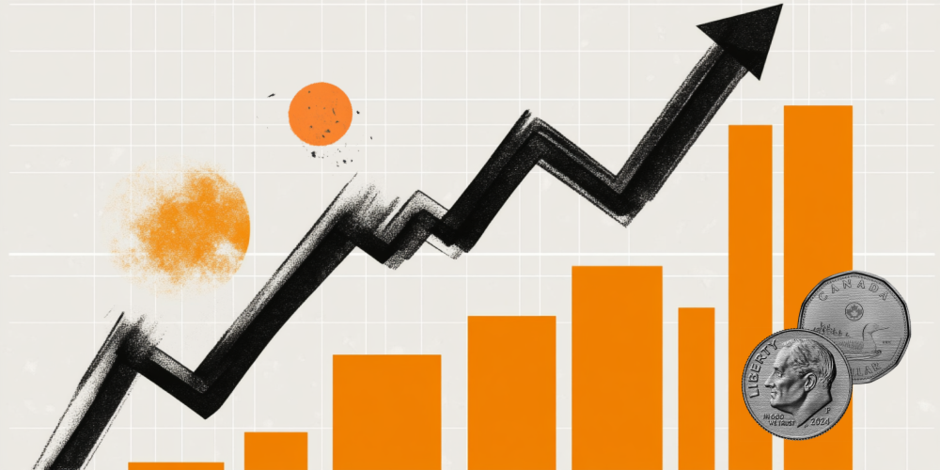USD/CAD jumps to near 1.4400 as US Dollar rises ahead of Trump’s inauguration
- USD/CAD rises to near 1.4400 as the US Dollar gains amid uncertainty over US Trump’s return to the White House.
- The US Dollar rises despite weak US Retail Sales for December and a sharp growth in Initial Jobless Claims.
- Investors expect the BoC to slow down the pace of winding up policy restrictiveness.

The USD/CAD pair climbs to near the key resistance of 1.4400 in Thursday’s North American session. The Loonie pair strengthens as the US Dollar (USD) recovers Wednesday’s losses, with investors turning cautious ahead of President-elect Donald Trump’s swearing ceremony on January 20.
The US Dollar Index (DXY), which tracks the Greenback’s value against six major currencies, rises to near 109.25. The safe-haven appeal of the US Dollar has improved as investors expect that Trump will provide an updated tariff plan soon after returning to the White House. This scenario will boost economic growth and inflationary pressures in the United States (US), which would force the Federal Reserve (Fed) to follow a more gradual policy-easing approach.
Meanwhile, traders have accelerated Fed dovish bets after the release of the US Consumer Price Index (CPI) data for December. The data showed that the annual core reading grew at a slower pace of 3.2% than estimates and the prior release of 3.3%. Also, month-on-month core CPI rose expectedly by 0.2%, slower than the previous release of 0.3%.
In Thursday’s session, the US Initial Jobless Claims data for the week ending January 10 came in higher than projected. Individuals claiming jobless benefits for the first time came in higher at 217K than estimates of 210K and the former release of 203K. The US Retail Sales data for December grew moderately by 0.4%, compared to estimates of 0.6% and November's reading of 0.8%.
The Canadian Dollar (CAD) performs weakly as investors expect the Bank of Canada (BoC) to continue reducing interest rates. However, market participants expect the BoC to slow down the pace of dialing back policy restrictiveness as the recent labor market data for December remained upbeat. The Canadian economy added 90.9K workers in December, compared to 50.5K in November.
Canadian Dollar FAQs
The key factors driving the Canadian Dollar (CAD) are the level of interest rates set by the Bank of Canada (BoC), the price of Oil, Canada’s largest export, the health of its economy, inflation and the Trade Balance, which is the difference between the value of Canada’s exports versus its imports. Other factors include market sentiment – whether investors are taking on more risky assets (risk-on) or seeking safe-havens (risk-off) – with risk-on being CAD-positive. As its largest trading partner, the health of the US economy is also a key factor influencing the Canadian Dollar.
The Bank of Canada (BoC) has a significant influence on the Canadian Dollar by setting the level of interest rates that banks can lend to one another. This influences the level of interest rates for everyone. The main goal of the BoC is to maintain inflation at 1-3% by adjusting interest rates up or down. Relatively higher interest rates tend to be positive for the CAD. The Bank of Canada can also use quantitative easing and tightening to influence credit conditions, with the former CAD-negative and the latter CAD-positive.
The price of Oil is a key factor impacting the value of the Canadian Dollar. Petroleum is Canada’s biggest export, so Oil price tends to have an immediate impact on the CAD value. Generally, if Oil price rises CAD also goes up, as aggregate demand for the currency increases. The opposite is the case if the price of Oil falls. Higher Oil prices also tend to result in a greater likelihood of a positive Trade Balance, which is also supportive of the CAD.
While inflation had always traditionally been thought of as a negative factor for a currency since it lowers the value of money, the opposite has actually been the case in modern times with the relaxation of cross-border capital controls. Higher inflation tends to lead central banks to put up interest rates which attracts more capital inflows from global investors seeking a lucrative place to keep their money. This increases demand for the local currency, which in Canada’s case is the Canadian Dollar.
Macroeconomic data releases gauge the health of the economy and can have an impact on the Canadian Dollar. Indicators such as GDP, Manufacturing and Services PMIs, employment, and consumer sentiment surveys can all influence the direction of the CAD. A strong economy is good for the Canadian Dollar. Not only does it attract more foreign investment but it may encourage the Bank of Canada to put up interest rates, leading to a stronger currency. If economic data is weak, however, the CAD is likely to fall.
Author

Sagar Dua
FXStreet
Sagar Dua is associated with the financial markets from his college days. Along with pursuing post-graduation in Commerce in 2014, he started his markets training with chart analysis.
















